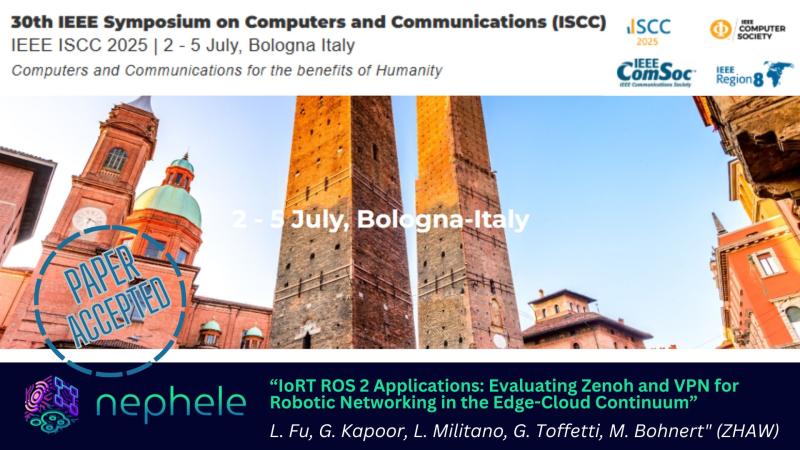
The paper "IoRT ROS2 Applications: Evaluating Zenoh and VPN for Robotic Networking in the Edge-Cloud Continuum" by our colleagues L. Fu, G. Kapoor, L. Militano, G. Toffetti, M. Bohnert" (ZHAW) and with acknowledgement to NEPHELE has received the Best Paper Award in the 5th IEEE International Workshop on Distributed Intelligent Systems (DistInSys 2025) - celebrated in conjunction with the 30th IEEE Symposium on Computers and Communications (ISCC 2025) - that took place on 2nd July 2025 in Bologna (Italy).
IEEE ISCC 2025, in its 30th edition, provided an insight into the unique world stemming from the interaction between the fields of computers and communications. IEEE ISCC 2025 was an international technical forum for experts from industry and academia to exchange ideas and present results of ongoing research in most state-of-the-art areas of computers and communications.
The workshop DistInSys 2025 focused on the integration and cooperation of sensing devices, agents, sensors, and robots in complex digital environments. It aimed to address the challenges of decomposing large systems into smaller, autonomous units for efficient local decision-making and control. The workshop invitds researchers, scientists, and engineers to discuss system design, data exchange, and subsystem integration to enhance the functionality of these interconnected devices in various scenarios, including space and harsh environments.
NEPHELE's paper presented at DistInSys 2025 compared the use of VPN and Zenoh in cloud robotics applications, focusing on communication latency, data throughput, and fault tolerance. Zenoh, an emerging networking framework, offers a low-latency, efficient alternative for edge-to-cloud communication and integrates seamlessly with ROS 2. This study analyzes the strengths and limitations of both approaches, providing insights into their suitability for distributed robotic applications and the trade-offs between security, latency, and scalability in networking solutions for the IoRT.
